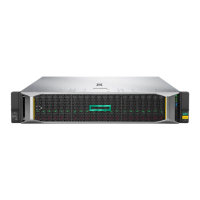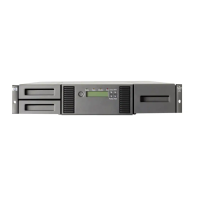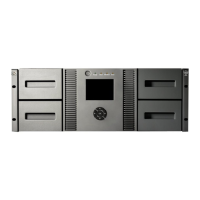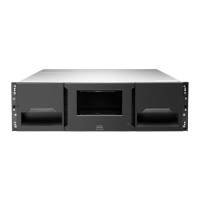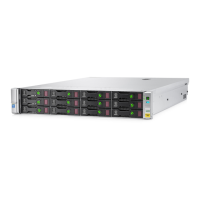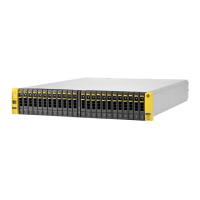Table 6 Summary of RAID methods
RAID 60RAID 50RAID 6
(ADG)
RAID 5
Distributed
Data Guarding
RAID 1+0
Mirroring
RAID 0 Striping
(no fault
tolerance)
Storage
system
dependent
14Storage
system
dependent
14N/AN/AMaximum number of
hard drives
YesYesYesYesYesNoTolerant of single hard
drive failure?
Yes (Two
drives can
fail)
NoYes (two
drives can
fail)
NoIf the failed
drives are not
mirrored to
each other
NoTolerant of multiple
simultaneous hard
drive failures?
Online spares
Further protection against data loss can be achieved by assigning an online spare (or hot spare)
to any configuration except RAID 0. This hard drive contains no data and is contained within the
same storage subsystem as the other drives in the array. When a hard drive in the array fails,
the controller can then automatically rebuild information that was originally on the failed drive
onto the online spare. This quickly restores the system to full RAID level fault tolerance protection.
However, unless RAID Advanced Data Guarding (ADG) is being used, which can support two
drive failures in an array, in the unlikely event that a third drive in the array should fail while data
is being rewritten to the spare, the logical drive still fails.
Logical storage elements
Logical storage elements consist of those components that translate the physical storage elements
to file system elements. The HPE StoreEasy 1000 Storage uses the Window Disk Management
utility to manage the various types of disks presented to the file system. There are two types of
LUN presentation: basic disk and dynamic disk. Each of these types of disk has special features
that enable different types of management.
Logical drives (LUNs)
While an array is a physical grouping of hard drives, a logical drive consists of components that
translate physical storage elements into file system elements. A LUN may also be referred to as
a virtual disk.
It is important to note that a LUN may span all physical drives within a storage controller
subsystem, but cannot span multiple storage controller subsystems. The multiple storage controller
subsystems could indicate multiple controllers or external enclosures.
Figure 44 Two arrays (A1, A2) and five logical drives (L1 through L5) spread over five
physical drives
NOTE: This type of configuration may not apply to all HPE StoreEasy 1000 Storage systems
and serves only as an example.
118 Storage management overview
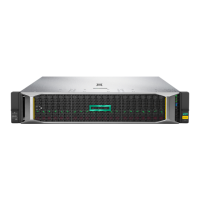
